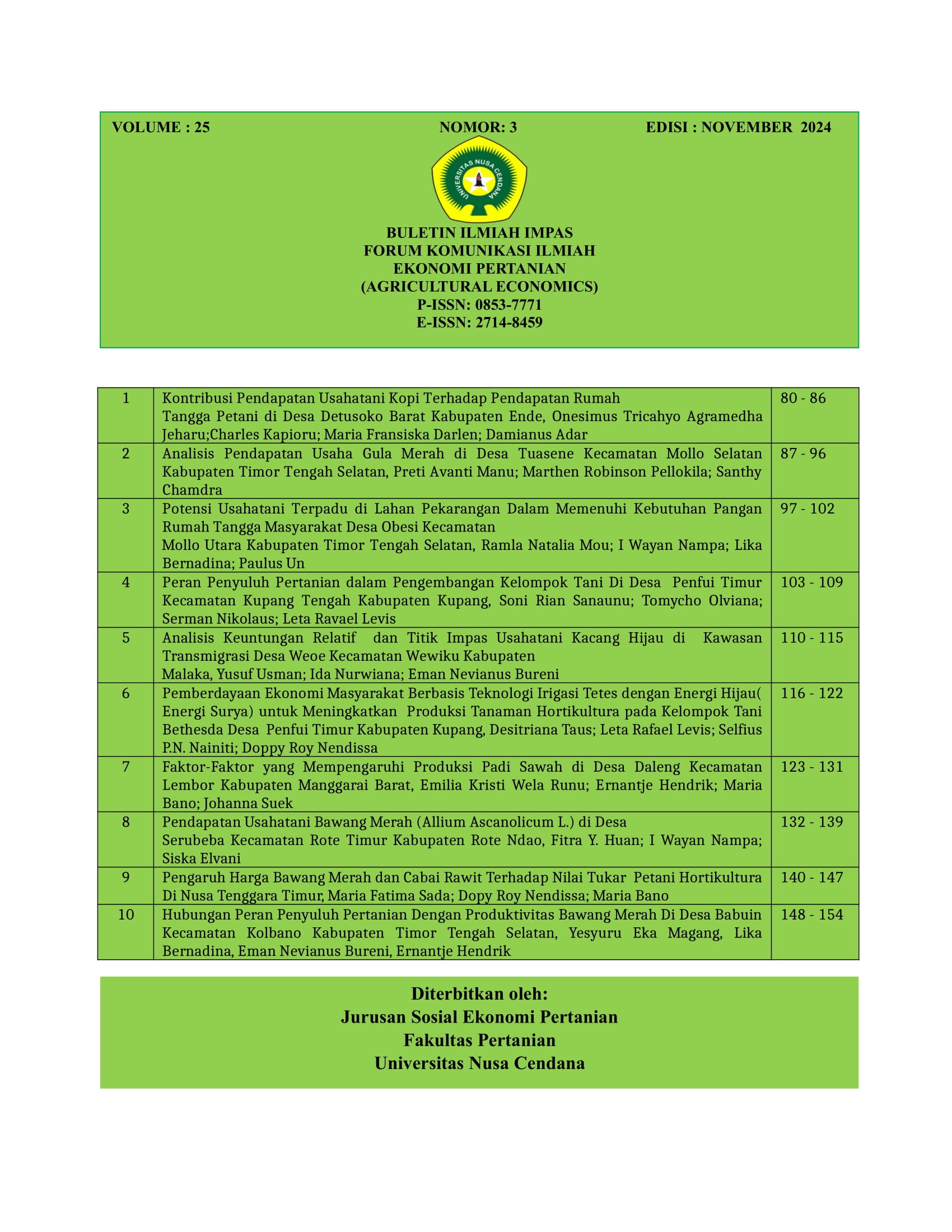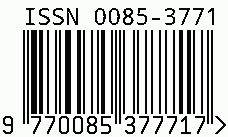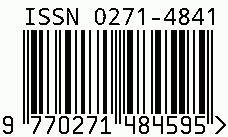Pengaruh Harga Bawang Merah Dan Cabai Rawit Terhadap Nilai Tukar Petani Hortikultura Di Nusa Tenggara Timur
Abstract
This research aims to determine price fluctuations and how the prices of shallots and bird's eye chilies affect the Farmers' Exchange Rate (FER). The data used are secondary data in the form of shallot and bird's eye chili prices from 2019-2023 obtained from the Central Statistics Agency of East Nusa Tenggara Province. Price fluctuations are measured using the coefficient of variation, while the impact of shallot and bird's eye chili prices is analyzed using multiple linear regression analysis. The results of this study indicate that shallot prices are more homogeneous than bird's eye chili prices, with a coefficient of variation of 19.80%, while bird's eye chili prices are more heterogeneous with a coefficient of variation of 22.63%. Overall, changes in shallot and bird's eye chili prices significantly affect the farmers' exchange rate, with the adjusted R2 determination coefficient indicating that 12.5% of the variation in the farmers' exchange rate can be explained by changes in shallot and bird's eye chili prices. However, when analyzed partially, it was found that only the price of shallots has a significantly negative effect on the farmers' exchange rate, while changes in bird's eye chili prices do not significantly affect the farmers' exchange rate. The significant negative value between shallot prices and the farmers' exchange rate indicates that the selling prices of shallots and bird's eye chilies are lower than the input prices. The decline in the farmers' exchange rate can indicate that farmers experience a decrease in purchasing power, which also reduces their welfare. The role of the East Nusa Tenggara government is needed to provide shallot and bird's eye chili seeds to encourage farmers to increase the production of these crops, which can reduce the supply from outside the region. This is aimed at lowering input prices and obtaining higher selling prices.

 Maria Fatima Sada(1*)
Maria Fatima Sada(1*)















